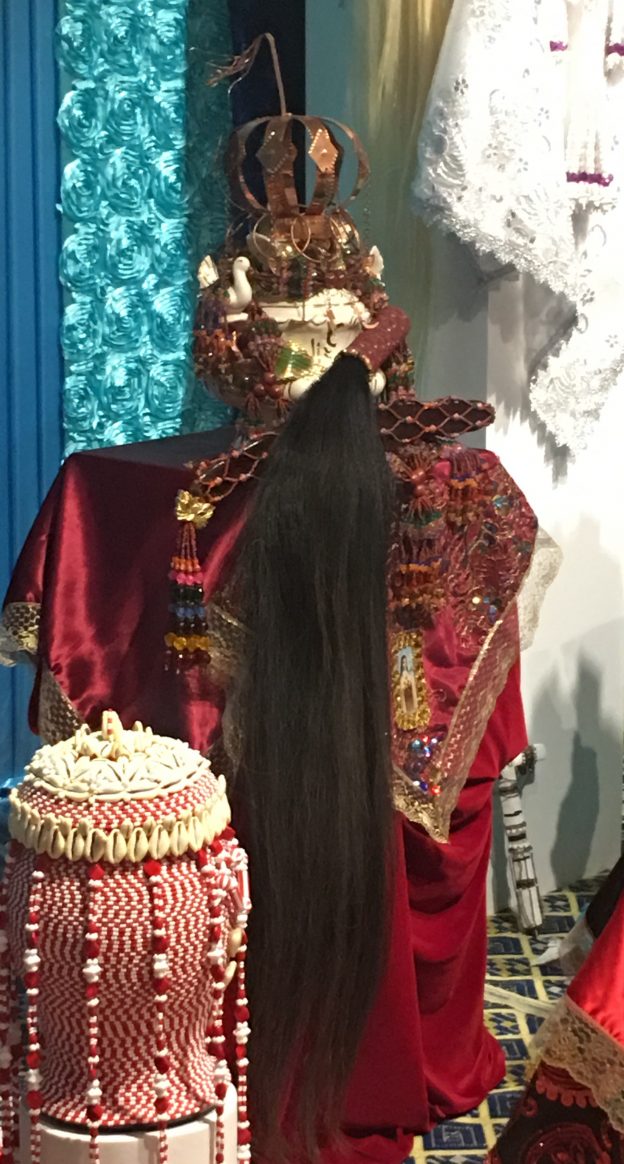The African Diaspora, is a word used to encompass the evolution and adaptation of religious practices originating on the African Continent, that have been held in the hearts of many religious practitioners, dating as far back to the Slave Trade, taking place between 1500-1800. During this period, thousands of Men, Women, and Children were abducted from the African continent, and shipped globally to the “New World”. With them, travelled their intricate religious and cultural practices, and these practices have been subjected to acculturation, and the forced adaptation of slaves to the America’s. The Diaspora, has been subjected to the practices of thousands of people from every walk of life, and have intertwined, culturally, with various religions from the Americas, to produce many blended, or hybridized religions that are continued to be practiced today, in the 21st Century. African Slaves were forbidden to practice African religions once in the America’s and to safely practice their religions, they incorporated the Christian Saints that closely resembled a specific Oriṣa. They “managed to establish altars to their dead even while blending with the Christian world: they coded their burial mounds as ‘graves’ but studded them with symbolic objects…”(Thompson, Overture: The Concept “Altar”). By doing so, they were able to practice their religion safely, and thus beginning the process of hybridization, blending cultural aspects of two religions and creating a hybrid religious practice. In the documentary, “Sacred Journeys with Bruce Feiler: “Oṣun-Oṣogbo” two American-African women, as they identify, are documented as they participate in the rite of induction into the priestess-hood of the Orisa, a Yoruba word for goddess, Osun.
Alatin Stewart, and Oni Yebiye-Hinton are two young women, traveling to the Oṣun-Osogbo Festival, in Osogbo, Nigeria. They answered the call to become inducted as priestesses into the Yoruba religion, an example of an African religious practice originated on the continent itself. The two young women, until this point had led their lives in the cultural-melting pot of the United States, and are ecstatic to return to the place of their ancestral roots, to dedicate their hearts to a religion that may have even had their ancestors as their religious leaders, many decades ago. The quote “We left Africa, but Africa never left us.” emphasizes the importance of keeping ones religion alive in their hearts, even if, like the African Slaves taken from their homeland, there comes challenges to ones environment, or lives in which their faith, and every other aspect of their being, is tested. When Alatin and One arrive at their religious site, the scene is one of abandoned streets, lined with stray animas, and a large gate at which their religious induction is to begin. Once the gates opened, we are allowed a glimpse into the heart of the Yoruba tradition, with priestesses and priests, welcoming the young women, and many breath-taking altars, lined with sea shells, gorgeous pearl jewelry and vibrant colorful flags to represent the Goddess Oṣun, who is a goddess of water, fertility, beauty, and love. The representation of Altars is a deeply sacred practice in the Yoruba tradition, as the focal point for the channeling of a god, or goddesses energy, and welcoming them to create change in the lives of the practitioner.
The Oṣun-Osogbo Festival, is a perfect example of the African Diaspora, and how various aspects of the cultural perspective can be observed to be similar to other religions such as Christianity. The flags used in the Yoruba tradition, contain multiple colors and patterns to represent different Oriṣa, similar to in Christianity, how various altar cloths and garments worn by religious leaders represent various saints, and angels. The Altars in the documentary are vastly similar to the altars read about in Thompson’s article, expressing different Oriṣa through colors, patterns and the fabric itself used to craft the flags. Thompson expressed the importance of an altar, and how an altar reflects the personality of the practitioner, and how they connect with their Oriṣa. Another cultural similarity are the dressings worn by the Yoruba women, that resemble closely many dresses and pieces of clothing worn by Spanish practitioners of religion, performing ritual dances for their gods and goddesses. These similarities amongst the Yoruba practices and those of other places display the acculturation that has occurred since the Slave Trade, to further adapt religious practices to include practitioners beyond the Yoruban culture.
Tying together with the documentary, the young women, were inducted as High priestesses of Oṣun, and were allowed to enter into Oṣun’s grove, the sacred dwelling place of the goddess of water, beauty, fertility, etc. and the two priestesses stood over the river, and explained that they both felt as if they had returned home, and this is what they were searching for their whole lives. These young women display the nature of the Diaspora, that two young women raised in a different part of the world in a different culture, could travel back to Africa and become High Priestesses, and devote their lives to the path they felt destined to walk. The Diaspora lives in the hearts of people today, who practice their religious beliefs freely, without constriction, in every location of the world, and blended aspects of their beliefs to honor their roots. Their growth and evolution throughout their lives and the life of their beliefs, and how they as people, will continue to grow, evolve and adapt to an ever changing world, just as so many African Slaves adapted and changed the beliefs of Diasporic Religions, to an ever changing global network of divine knowledge and practices.
 I am studying Fon scepter for the God Hevioso. This object is a wooden staff with an axe like head and is used in political and festival practices in what is now modern day Benin. I want to study this object because I want to learn more about the use of these scepters in court and religious practices. I also want to know more about this specific scepter and the king or Oba who carried this scepter and the effect it had on the Fon people. I want to know more about how the designs on the scepter represent the king who held it and Hevioso the God of Thunder. This research will help the reader understand that objects that are taken out of festivals have little to no meaning unless it is shown in a practical sense. It helps the reader understand that each object has a much deeper meaning and each king has a god representing them.
I am studying Fon scepter for the God Hevioso. This object is a wooden staff with an axe like head and is used in political and festival practices in what is now modern day Benin. I want to study this object because I want to learn more about the use of these scepters in court and religious practices. I also want to know more about this specific scepter and the king or Oba who carried this scepter and the effect it had on the Fon people. I want to know more about how the designs on the scepter represent the king who held it and Hevioso the God of Thunder. This research will help the reader understand that objects that are taken out of festivals have little to no meaning unless it is shown in a practical sense. It helps the reader understand that each object has a much deeper meaning and each king has a god representing them.